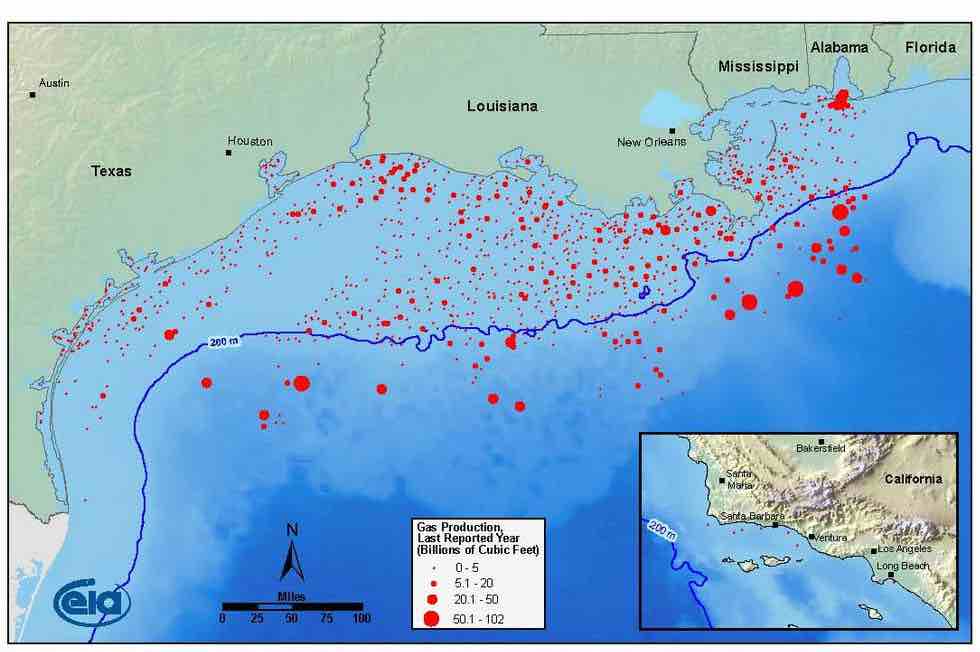April 2017, Vol. 244, No. 4
Features
Interior Department Proposes 73-Million-Acre GOM Lease Sale

U.S. Secretary of the Interior Ryan Zinke announced the department will offer 73 million acres of offshore Texas, Louisiana, Mississippi, Alabama and Florida for oil and gas exploration and development. The proposed region-wide lease sale, scheduled for Aug. 16, would include all available unleased areas in federal waters of the Gulf of Mexico.
“Opening more federal lands and waters to oil and gas drilling is a pillar of President Trump’s plan to make the United States energy independent,” Zinke said. “The Gulf is a vital part of that strategy to spur economic opportunities for industry, states and local communities, to create jobs and home-grown energy and to reduce our dependence on foreign oil.”
Proposed Lease Sale 249, scheduled to be live-streamed from New Orleans, will be the first offshore sale under the new Outer Continental Shelf Oil and Gas Leasing Program for 2017-22. Under the program, 10 lease sales are scheduled for the Gulf, where the resource potential and industry interest are high, and oil and gas infrastructure is well-established. Two Gulf lease sales will be held each year and include all available blocks in the combined Western, Central, and Eastern Gulf of Mexico Planning Areas.
The estimated amount of resources projected to be developed as a result of the proposed lease sale ranges from 211 MMbbls to 1.118 Bbbls of oil and 0.547 to 4.424 Tcf of gas. The sale could potentially result in 1.2-4.2% of the forecasted cumulative OCS oil and gas activity in the Gulf of Mexico. Most of the activity (up to 83% of future production) of the proposed lease sale is expected to occur in the Central Planning Area.
Lease Sale 249 will include about 13,725 unleased blocks, located from 3 to 230 miles offshore, in the Gulf’s Western, Central, and Eastern planning areas in water depths ranging from 9 to over 11,115 feet.
Excluded from the lease sale are blocks subject to the congressional moratorium established by the Gulf of Mexico Energy Security Act of 2006, blocks adjacent to or beyond the U.S. Exclusive Economic Zone in the northern portion of the Eastern Gap, and blocks within the boundary of the Flower Garden Banks National Marine Sanctuary.
An article in the March 9 edition of the Washington Post noted that the plan is similar to a five-year proposal by the Obama administration to lease 66 million acres in the same location, the gulf’s “Western, Central and Eastern planning areas” where water is as shallow as 9 feet and as deep as 11,000 feet. As he prepared to leave office, President Obama banned drilling in the Arctic and Atlantic oceans for the next five years, but allowed it in the gulf with lease plans offered primarily off gulf states other than Florida.
Obama’s interior secretary, Sally Jewell, said the proposal’s leases were focused “in the best places – those with the highest resource potential, lowest conflict and established infrastructure – and removes regions that are simply not right to lease.” The gulf, an area that has seen intense drilling, would see more compared with the Arctic and Atlantic, where little drilling occurs.
Like the Interior Department under Obama, Trump’s department said lease terms would stipulate protecting “biologically sensitive resources, mitigate potential adverse effects on protected species, and avoid potential conflicts associated with oil and gas development in the region.”
“To promote responsible domestic energy production, the proposed terms of this sale have been carefully developed through extensive environmental analysis, public comment, and consideration of the best scientific information available,” said Walter Cruickshank, the acting director of Interior’s Bureau of Ocean Energy Management (BOEM). “This will ensure both orderly resource development and protection of the environment.”
The terms include stipulations to protect biologically sensitive resources, mitigate potential adverse effects on protected species and avoid potential conflicts associated with oil and gas development in the region. BOEM’s proposed economic terms include a range of incentives to encourage diligent development and ensure a fair return to taxpayers. Different terms and conditions may be employed in the final notice of sale, which will be published at least 30 days before the sale.
BOEM estimates the U.S. Outer Continental Shelf (OCS) contains about 90 Bbbls of undiscovered technically recoverable oil and 327 Tcf feet of undiscovered technically recoverable gas. The Gulf of Mexico OCS, covering about 160 million acres, has technically recoverable resources of 48.46 Bbbls of oil and 141.76 Tcf of gas.
Production from all OCS leases provided 550 MMbbls of oil and 1.25 Tcf of natural gas in FY2016, accounting for 72% of the oil and 27% of the natural gas produced on federal lands. Energy production and development of new projects on the U.S. OCS supported an estimated 492,000 direct, indirect and induced jobs in fiscal 2015 and generated $5.1 billion in total revenue that was distributed to the federal Treasury, state governments, the Land and Water Conservation Fund and the Historic Preservation Fund.
As of March 1, about 16.9 million acres on the U.S. OCS are under lease for oil and gas development (3,194 active leases) and 4.6 million of those acres (929 leases) are producing oil and natural gas. More than 97% of these leases are in the Gulf of Mexico – about 3% are on the OCS off California and Alaska.
The 2012-17 Five Year Program has offered about 73 million acres, netted over $3 billion in high bids for taxpayers and awarded over 2,000 leases.
All terms and conditions for Gulf of Mexico Region-wide Sale 249 are in the proposed notice of sale (PNOS) information package, available at: www.boem.gov. Copies of the PNOS maps can be requested from the Gulf of Mexico Region’s Public Information Unit, 1201 Elmwood Park Blvd, New Orleans, LA 70123, or 800-200-GULF (4853).
The Notice of Availability of the PNOS are available for inspection in the Federal Register.





Comments